Top Doomsday Discs For Your Bag!

In this line of “work”, I interact with a lot of companies, representatives, players, and more.
Believe me when I tell you, there’s only one Doctor Death.
You might think, behind the scenes, this person might reveal their true name to be something like “Gary” and have some “off-the-record” discourse about Doomsday Discs’ company/branding and how they came up with it all.
No, no, no. Not with me at least!
As far as I’m concerned, Doctor Death knows the end is near, and when it comes, the good Doctor and the loyal Doomsday street team plan to emerge from their bunkers and play some disc golf in our new dystopian reality.

I don’t know about you, but this brings me some measure of comfort. I’m glad to know that the game will live on when I’m gone.
I just hope my corpse doesn’t get in the way and stop their discs from skipping close to the basket. If it does, just sling me aside for the foursome of Doomsday players behind you.
If you could though, point me towards the basket so I can watch the apocalyptic disc golf action unfold…
In the meantime, while we wait for the inevitable, we’ve got a Doomsday Discs featured post for you.
Doomsday has some incredibly unique discs for you and some more conventional ones as well.
We went ahead and ranked their discs in a lot of different categories to help you find some Doomsday Discs to fill some slots in your bag.
First, let’s take a look at Doomsday Discs and what they’re about…
The Doomsday Discs Loyal Fanbase
In my background “research” on Doomsday Discs and my own anecdotal findings picked up from the ether, the Doomsday fanbase and street team have separated themselves as some of the most loyal fans in disc golf.
If a new disc drops with one of their signature stamps, it can sell out in minutes.
If you play a round with a Doomsday loyalist, not only are they throwing all Doomsday discs but they’ll probably be decked out in the apparel with the swag to match.
They love the brand and they show it…
Here’s what Doctor Death had to say…
“Team Doomsday is the most devoted and passionate disc golf brand “street team” on the planet. If you take a chance and make bold moves, there’s usually somebody who will appreciate what you’re doing. So, the brand is really theirs. It’s for them, driven by them, and they call the shots. You reap what you throw.”
Within that quote, and in addition to the clear recognition that Doomsday Discs’ fans are incredibly loyal and instrumental to their brand, there’s another part that’s intriguing as well.
“If you take a chance and make bold moves, there’s usually somebody who will appreciate what you are doing..”
Not only is their branding innovative and unique, but so too are some of their discs!
Doomsday’s BOLD Discs
I said it before. Doomsday Discs will definitely have some more conventional molds that are more akin to something you might find with some other brands.
They also, however, have some incredibly singular discs that look, feel, and fly different than anything you might have thrown before.
At the very least, when you pull one of these discs out of your bag, it’s a conversation starter with your fellow disc golfers.
“Are you throwing a disc or a trash can lid?*” might be the start of the conversation if you pull out the Depth Charge for a touchy approach shot.
The Land Mine Is one of many unique molds in the Doomsday Discs lineup.
Then, after you nestle it close, the conversation might shift. “Can I try that thing?”
And a new Doomsday Discs fan is born.
By my count, they have at least 6 such “bold” discs, some with more utility on the course than others (the way I view things).
We’ll rank them, along with many other categories, so you can see for yourself.
Before that, let’s take a quick look at some Doomsday Discs History (or what little I could gather).
*Shout out to the commenter(s) that got a chuckle out of me comparing either the Land Mine or the Depth Charge to a trash can lid.
Doomsday Discs Background…
When I asked Doctor Death when Doomsday started, this is some of what I got…
“I would say that the first sign of the beginning of Doomsday was the Carrington Event in September, 1859 during solar cycle 10. That caused a reversal of direction in the slow-moving magnetic poles…”
And on it went!
Thankfully Doctor Death seemed to know what I was getting at and gave me this as well…
“In the meantime, we started a disc golf brand that embraces these inevitabilities a few months before our first PDGA approved disc was announced, the Plague, in April 2022.”
Since that fateful day in 2022, Doomsday Discs have been quite busy. At the time of this post, Doomsday Discs has 30 different molds on the market.
They come in some high-quality plastics at very competitive prices. It’s time to rank them!
Ranking The Best Doomsday Discs!
It’s time… No, not that time…yet. The apocalypse will come and hopefully the Doomsdayers can give us a heads when it does so we can do a little last-minute prep work ourselves.
Right now, we’re going to highlight and rank the best Doomsday Discs on the market in a variety of categories.
We ranked them based on a multitude of criteria. It came down to personal experience, mixed with disc rankings from other disc golfers, along with some other variables like how long it’s been on the market and others that we’ll keep to ourselves (we can’t just give out our award-winning recipes willy-nilly)…
Let’s begin with midranges. I’ll explain why in a moment…
Best Doomsday Midranges!
“Why would you start with midranges?” you rightly inquire.
Because Doomsday’s midranges are awesome. That’s why.
These guys have cooked up all sorts of mids that could and should be in bags for players of all levels. Beginners to pros.
Doomsday has a lot of great discs as you’ll see, but I couldn’t help but appreciate the breadth of greatness with their midranges. They’re so good, I had a great deal of trouble ranking them. More than any other, take these rankings with a grain of salt, and if you see one that fills a slot in your bag, you won’t go wrong with it.
For this reason, we start here…
- Despair – Factory Flight Numbers: 5, 4, -1, 1 (Avg. Rating: 5.0 stars) A classic, straight-as-you-like flyer, that can turn with power and has a great hand feel.
- Crisis – Factory Flight Numbers: 4, 2, 0, 4 (Avg. Rating: 5.0 stars) This disc easily handles forehand and backhand torque and can be released at extreme angles to bend around obstacles and get you close!
- Scavenger – Factory Flight Numbers: 5, 5, -2, 1 (Avg. Rating: 5.0 stars) Great for Finesse shots on many angles. Also hyzer-flips to straight with good glide.
- Wasteland – Factory Flight Numbers: 5, 4, 0, 1 (Avg. Rating: 4.83 stars) Great, stable, straight-flying midrange with nice glide and reliability.
- Desolation – Factory Flight Numbers: 5, 5, 0, 2 (Avg. Rating: 4.7 stars) A steady, dependable midrange with a very consistent fade.
- Scope – Factory Flight Numbers: 4, 4, 0, 2 (Avg. Rating: 4.75 stars) A fun, 4-speed with unique hand-fell that helps you laser in on your target with very consistent results!
- Flat Earth – Factory Flight Numbers: 5, 5, -1, 0 (Avg. Rating: 4.71 stars) Flippier than the numbers suggest, but the glide is very real and the turnover lines are exceptional.
- Frag – Factory Flight Numbers: 5, 2, 0, 5 (Avg. Rating: 4.22 stars) This is seemingly a utility disc that can bend at extreme angles when you need it to.
Let’s move on to a close relative: Approach Discs.
Top Doomsday Approach Discs!
Not surprisingly, given the excellence of their midrange discs, Doomsday has some fantastic approach discs as well.
When you find yourself somewhere in the vicinity of 150 feet (about 45 meters) out, depending on the shot you face, there are a lot of great options from Doomsday Discs so you can put it close.
- Area 51 – Factory Flight Numbers: 4, 3, 0, 2.5 (Avg. Rating: 4.88 stars) Extremely reliable fade, with a just-right glide and hand feel. Works great for backhand and forehand so you don’t overshoot and can nestle it close.
- Crisis – Factory Flight Numbers: 4, 2, 0, 4 (Avg. Rating: 5.0 stars) If you like extra beef in your approach disc, Crisis has you covered. It feels great backhand and forehand and the fade is real so you can zag around obstacles as well.
- Depth Charge – The thinner-rimmed, premium-plastic cousin of the Land Mine. This low-glide, flexible disc will fly straight at the basket with minimal fade and very low roll-away potential. Try The Scope for a touch more glide and stability.
- Scavenger – Factory Flight Numbers: 5, 5, -2, 1 (Avg. Rating: 5.0 stars) Bend this delicately around obstacles for soft, finesse approach shots.
Best Doomsday Fairway Drivers!
Doomsday Discs has less Fairway Drivers than other categories of discs, but they have some really nice options for disc golfers that want some controlled distance.
Here are some favorites…
- Blackout – Factory Flight Numbers: 8, 5, -2, 1 (Avg. Rating: 4.76 stars) A smooth hyzer-flip disc for easy glide and straight distance. Also holds long anhyzer lines very nicely when you find yourself in a bind on the course.
- Ice Age – Factory Flight Numbers: 7, 4, 0, 3 (Avg. Rating: 4.63 stars) A no-nonsense, wind-busting, highly flickable, & very dependable disc in all conditions.
- Chemtrail – Factory Flight Numbers: 7, 6, -2, 1 – A high-glide, hold-many-lines, workable gem of a disc that could be a go-to for many players for years to come.
- Solar Death Ray – Factory Flight Numbers: 8, 5, -1, 1 (Avg. Rating: 4.0 stars) With grip-enhancing grooves on the flight plate, this disc is intriguing. It flies nice and straight and can be used well for both forehand and backhand.
Best Doomsday Distance Drivers!
Look, Doomsday Discs do not play by everyone’s rules. This, from how I see it, is part of their big appeal. They do not conform. They do not want to conform.
When asked about some of their “meme” discs here’s what Doctor Death had to say:
“We’re happy to produce “meme” discs, but really, those are simply discs that break the norms of standard disc design. The PDGA has always tried to limit what can be used in competitive, sanctioned play, but there is still some room within those limitations to create discs that don’t look, feel, or fly quite like other discs…”
Well, when categorizing “Distance Drivers” they have a few discs that would slot nicely into that “meme” disc category.
Would I recommend some of these “meme” discs for attempting to throw long distances?
I would not.
But that doesn’t mean they don’t have a place in disc golf. So, for this section, let’s do drivers that would recommend for throwing long distances.
Then, later, let’s have a section for some of these aforementioned “meme” discs as well.
- Dystopia – Factory Flight Numbers: 10, 5, -2, 2 (Avg. Rating: 4.55 stars) If you want consistent, controllable, straight-line, natural distance, then this is your disc.
- Cataclysm – Factory Flight Numbers: 11, 5, -1, 2 (Avg. Rating: 4.5 stars) This great-feeling disc provides workable, easy distance for lots of arm speeds.
- Plague – Factory Flight Numbers: 12, 5, -1, 2.5 (Avg. Rating: 4.58 stars) Has the potential to be a backhand or forehand distance workhorse in your bag.
- Lockdown – Factory Flight Numbers: 10, 5, -1, 2 (Avg. Rating: 4.25 stars) A straight, steady, very controllable driver for good distance and predictable results.
- Famine – Factory Flight Numbers: 12, 5, -2, 1 (Avg. Rating: 4.05 stars) Understable, beginner-friendly distance driver right out of the box.
- Pestilence – Factory Flight Numbers: 13, 5, -4, 1 (Avg. Rating: 4.05 stars) Finally, a 13-speed that beginners can rip on. Also good for long, if a bit touchy, turnovers and, of course, some serious rollers.
Top Doomsday “Meme” Discs
As promised, here’s a section on Doomsday “meme” discs. And continuing the quote from above, Doctor Death also had this to say…
“…Why not have a boxy disc that flies wonderfully and then hits the breaks and falls before overshooting the target and gliding into a pond? Why not make a disc that fades the moment it leaves your hand so that you can make a sharp fade around a stand of trees in which you’re otherwise trapped? Why not have grooves on the top of a driver instead of just a dog-disc putter? Why not do something different?”
So, with that in mind, let’s rank these so-called “meme” discs!
- The Land Mine Family – This family includes the Land Mine, Depth Charge, and even Proximity Mine. These are round “boxy” approach discs that can take power, and will get down so you don’t go OB long. Great for soft bids from distance too.
- Apocalypse – I’d be genuinely impressed if you could throw this 12-speed disc much farther than 250 feet. It takes the word “overstable” to a new level. But therein lies the fun perhaps. It won’t likely make your tournament bag, but throw it in for a casual round and let your cardmates take a rip on it for some good fun.
- Frag – This extremely overstable midrange will begin it’s fade almost as soon as you release it. But you can put this to use by zagging between trees or getting big lateral utility skips up to the basket.
- WMD – Good luck controlling this flippy 15-speed. It’ll certainly go far. Where it goes, is anybody’s guess, however. Still, it’s another disc that is great for friends to bomb with during a casual round. Don’t bring it out for a sanctioned event as it is not PDGA approved!
- Solar Death Ray – I liked throwing this groove-topped 8-speed. I’m not even sure it belongs in this category. It takes some getting used to but the grooves can give a little extra grip in certain adverse throwing conditions.
Best Doomsday Putters
With most manufacturer reviews, you might start with the putters.
But that sounds conventional. And maybe this Doomsday bucking of convention is rubbing off on me as well…
We’ve already ranked some of their putters in the approach discs sections. For this section we’re going to stick to throwing and putting putters. That gives us 3 left to get to and all 3 have elements you’ll appreciate.
- Rot – Factory Flight Numbers: 2, 4, 0, 1 (Avg. Rating: 4.67 stars) A really nice throwing putter that keeps a nice straight line with a light, predictable fade. This disc is also appreciated as a putting putter and has a subtle bead to it.
- Gloom – Factory Flight Numbers: 2, 3, -1, 1 (Avg. Rating: 4.5 stars) A beadless, glidey putting putter that is good for bids from circles 1 and 2.
- Bleak – Factory Flight Numbers: 2, 4, -1, 1 (Avg. Rating: 4.29 stars) A hybrid putting and throwing putter that has a slight turn to it at higher powers and has a nice straight, floating flight around the basket.
Best Doomsday Discs – In Summary
Doomsday Discs brings something fresh to the disc golf world and their fans truly appreciate this about them.
The fans don’t just support in half measures. They are loyal until the bitter end.
When and how that bitter end does come is anybody’s guess. Until that day, there are plenty of great Doomsday Discs that we’ve highlighted and ranked for you to enjoy pre-apocalypse (and possibly post-apocalypse if you play your cards right).
When that day does come, I’m guessing my days will probably be numbered. And if that’s the case, when I come to that morbid realization I’m going to take Doctor Death’s sign off to me as life advice.
“Go Down Throwing”





 In the top right of the red display box (near the X) is a “sort by” drop-down menu.
In the top right of the red display box (near the X) is a “sort by” drop-down menu. Click that drop-down menu and select “Weight: Low to High”.
Click that drop-down menu and select “Weight: Low to High”.


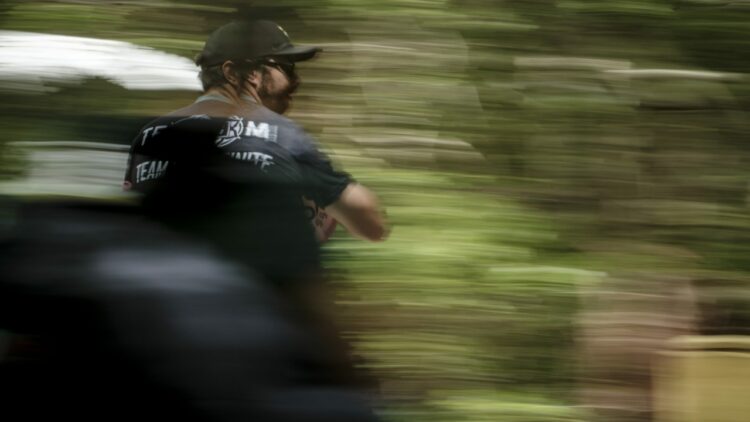
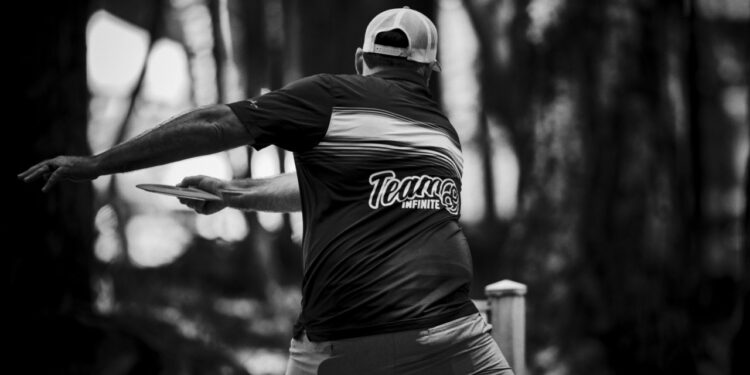
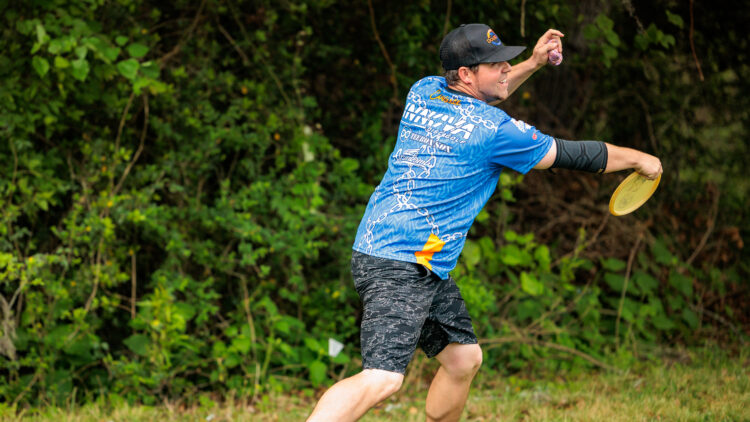

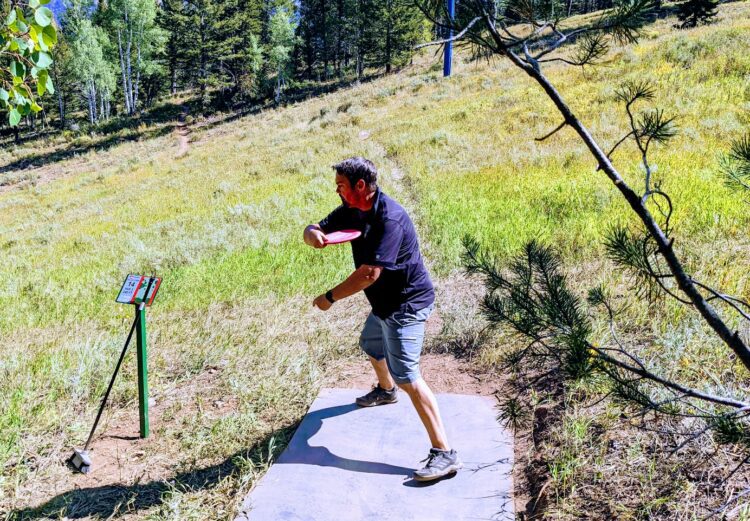
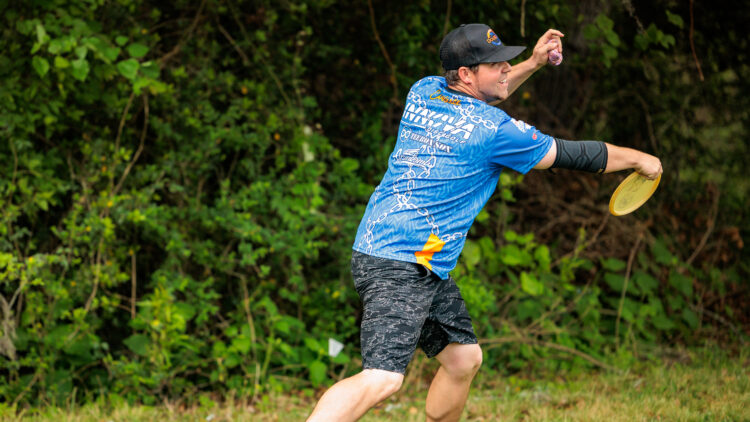 Distance For Rollers!
Distance For Rollers!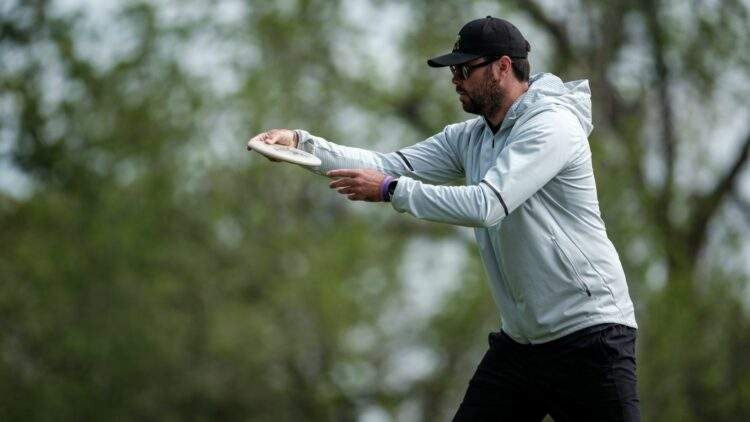
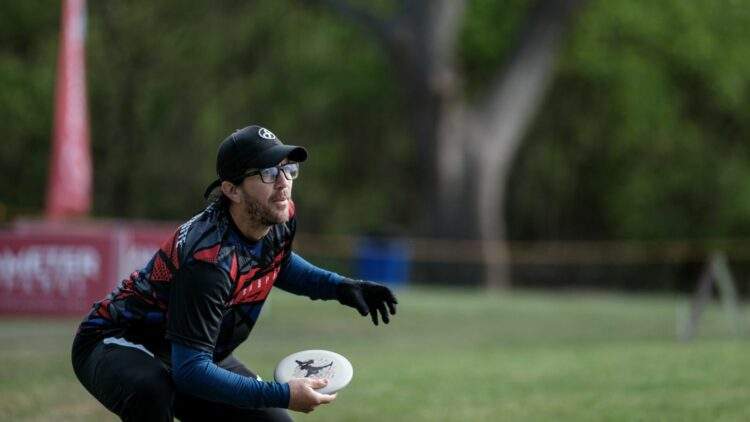 Practice with obstacles in your path, or brush in your normal swing path.
Practice with obstacles in your path, or brush in your normal swing path.